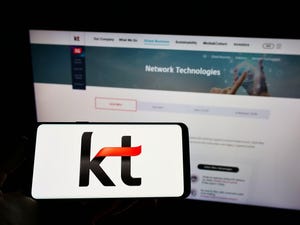
For mobile operators plotting their 5G futures, backhaul is fast emerging as one of the most pressing concerns.
In short, how does an operator handling so much data traffic prevent the connections between basestations and the core network from becoming a business-destroying bottleneck?
The widespread assumption is that operators will rely increasingly on high-speed fiber networks in this backhaul domain. After all, the state-of-the-art fiber technologies now at the industry's disposal look ideal for propping up the very busiest 5G networks.
Trouble is, such fiber networks may be unavailable or inaccessible on satisfactory terms. In the UK, mobile operators have largely relied on wholesale deals with BT, the country's fixed-line incumbent, to address their backhaul needs. Yet the lack of competitive alternatives to BT Group plc (NYSE: BT; London: BTA) has made this an unprofitable relationship for anyone except BT, says John Naylon, chief technology officer of small wireless equipment vendor Cambridge Broadband Networks Ltd. (CBNL).
That is opening doors for CBNL, says Naylon. Despite some industry concern that wireless technology is simply not up to the job, he thinks BT's dominant position and "monopoly pricing" could drive mobile-only operators such as Vodafone UK into CBNL's wireless embrace.
"It doesn’t matter if there is fiber to a building. What matters is if there is competitive provision," Naylon tells Light Reading. "Monopoly provisioning is not good enough for a competitive service provider."
It is already well documented that mobile operators in the UK, and other parts of Europe with similar characteristics, have been eyeing alternatives to wholesale deals with fixed-line incumbents. Some operators have built their own fiber networks. For others, the cost of that remains prohibitive. In the UK, that appears to be fueling interest in CityFibre and other alternative fiber providers. But it has also prompted some players to use the microwave technologies that are the focus for CBNL. (See Vodafone UK Turns Mobile Network Guns on BT/EE, Vodafone, 3 Plot UK Fiber Moves Amid Rules Shake-Up and Eurobites: CityFibre Hooks Up With Vodafone.)
Deploying microwave is a far less costly undertaking than connecting thousands of basestations to fiber, of course. That explains why some operators without existing fixed-line assets have swung behind it. What's been in doubt is whether microwave has the muscle to support the much higher-speed connectivity that 5G will bring. Even with more advanced 4G services, some market watchers have questioned its capability.
Want to know more about 5G? Check out our dedicated 5G content channel here on
Light Reading.
Yet by taking advantage of high frequency spectrum bands, CBNL thinks it can measure up. Founded way back in 2000, the Cambridge, UK-based company began life developing technologies for much lower spectrum ranges (including, initially, the 2.5GHz band). More recently, though, it has turned its attention to the so-called millimeter wave spectrum, which resides in much higher bands, and today it says the lowest range it supports is at 10GHz. That has given customers more bang for their backhaul buck, according to Naylon.
"A common throughput that a millimeter wave link might be in the future is 10Gbit/s, which is more than adequate for a 5G node," he says.
The next couple of years will be critical for CBNL as operators start to prepare for the launch of standardized 5G services. While it does not, as a privately owned company, disclose details of sales and profits, it recently appears to have been on something of a roll. That is largely thanks to its entry about three or four years ago into the US market, where interest in "pre-5G" services and millimeter wave technologies is soaring. "It's become our second-largest region in that time," says Naylon. The arrival of 5G could generate even more demand for CBNL's technology.
Next page: Just a gap filler?
Just a gap filler
The risk is that CBNL has largely been a gap filler. Customers using its technology to support end-user connectivity -- and not as a backhaul solution -- now account for about 70% of CBNL's business. "We must have connected thousands of businesses and tens of thousands of residential users," says Naylon. Backhaul sales, correspondingly, have shrunk from 50% to 30% of the total. If "access" customers have turned to CBNL simply because a standardized 5G technology has been unavailable, the arrival of standards in the next couple of years could spell trouble.
It's a risk that Naylon downplays. "If you are in the mobile operator space then staying within the 3GPP is desirable, but if you are an access provider of some other kind then the 3GPP stack represents a big transition," he says. "It may be that some customers do not move to those standards."
One possibility, however, is that CBNL starts to "converge" with the 3GPP, says Naylon. While he will not explain exactly what he means by this, the suggestions are that CBNL will become more involved with the standards group as it develops its technology. "Some of the economies of scale that 5G brings will allow us to make changes to our product line to enhance its appeal," he says.
Outside the 3GPP, the company has also been trying to fortify its technology. In the pipeline is a product aimed at overcoming the "line of sight" limitations of millimeter wave spectrum by combining it with unlicensed frequencies in much lower bands. "Being able to orchestrate the use of spectrum resources across multiple bands and get the best access you can in a coordinated way will be a significant factor of success in 5G," says Naylon.
In the UK and other European markets, regulation could work to CBNL's advantage. As they start to think about freeing up millimeter wave spectrum for mobile operators, many European regulators have stopped short of making incumbent telcos provide certain types of wholesale fiber product for mobile backhaul purposes. In other cases, operators have not been required to "open" their ducts and poles so that rivals can more easily build competing fiber networks. That hands CBNL a big opportunity to prove that millimeter wave backhaul can be effective in a 5G setting.
— Iain Morris, 

 , News Editor, Light Reading
, News Editor, Light Reading
Read more about:
EuropeAbout the Author(s)
You May Also Like












